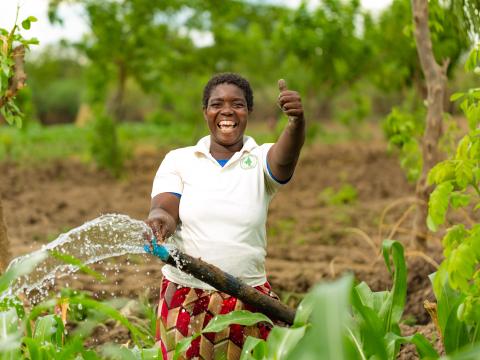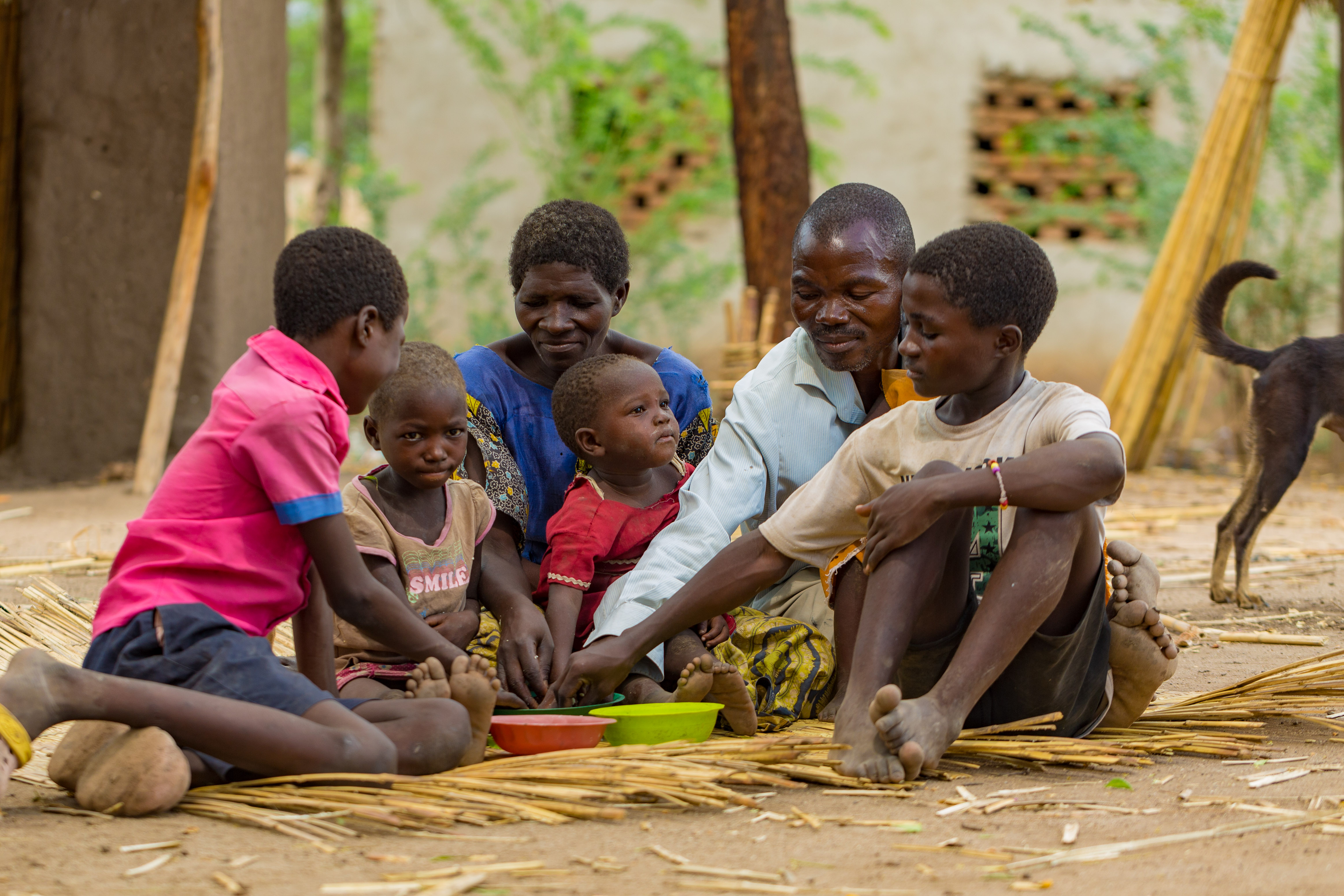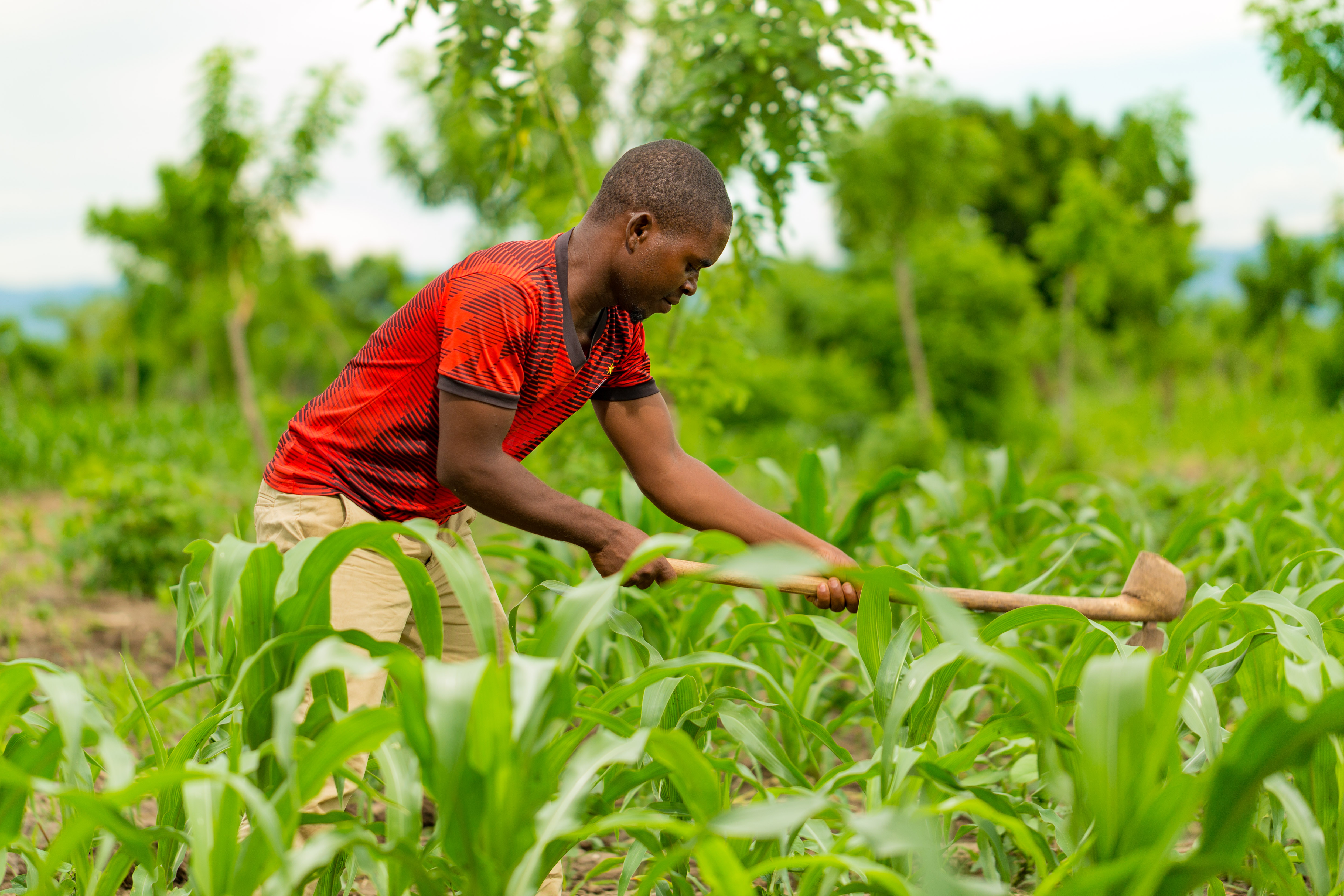Invest more in irrigation to beat child hunger.

On a sweltering afternoon typical of the Shire Valley at the southern tip of Malawi, rare lunchtime fires in roadside kitchens give sights of worsening hunger in Harrison Village, Chikwawa District.
In John Fabiano’s household, two children below six were seen eating nsima with wild vegetables.
The staple cornmeal has become scarce and costly since 2024 when drought caused by El Nino weather scorched crops across southern Africa.
“It’s their only meal for the day. Our food basket is dry and grain prices have more than doubled since last year,” says the 35-year-old farmer.
He spends lunchtime stitching mats for sale to buy food for his family, which includes children below six.
“Life is hard. I’ve had to skip lunch so that my children can eat. We can only afford one meal on a lucky day when we sell a mat,” says Fabiano, eyes firmly on the mat taking shape.
Each costs K2 500 (slightly over $1).
Fabiano has taught his seven children to make mats—outside school hours—in a desperate attempt to maximize revenue and beat chronic hunger.

The family has suffered frequent crop failures in the past decade. In 2019, Cyclone Idai buried their maize field the size of a football field in silt. Then came cyclones Ana and Gombe in 2022 and Freddy in 2023.
“Hunger and poverty due to unpredictable weather,” he says. “If it’s not flooding, it’s drought. Due to last year’s drought, we got just a bag of maize from an acre where we harvested 10 before Cyclone Idai.”
The family of nine consumed the inadequate harvest within weeks, leaving them relying on reed mat sales and piecework in neighbours’ fields.
The Shire Valley received scanty rain since February 2024, leaving crops wilting,
Farmers like Fabiano normally turn to lowlands along the Shire River, utilising residual moisture and fertile alluvial soil to beat hunger.
However, the reprieve proved unattainable last year as the country’s largest river swamped crop fields along its banks with outflows from swelling Lake Malawi following heavy downpours at its northern tip.
“We survive on winter cropping, but our crop fields remain in the water as food prices rise every week,” says Fabiano.
His family was among the recipients of food aid from World Vision Malawi (WVM) from July to December 2024. Following Malawi’s appeal for international support in March 2024, each household received K60 000 monthly for buying food.
WVM works to ensure every child has enough nutritious food as over 5.7 million people in Malawi require urgent food aid, according to the Malawi Vulnerability Committee.
Francis Dube, WVM Country Director , says the Christian organisation envisions a world where every child enjoys enough nourishing food so they can thrive.
“This has always been possible because we have enough resources, but that’s not the reality. Every day, children are being forced to go without food. With enough support, we can ensure there is enough political will and financing to end child hunger and malnutrition,” he says.
WVM modernized the 8.5-hectare Lalanje Irrigation Scheme which empowers farmers to get two to three harvests yearly despite dry spells.

Their scheme, which supports the livelihoods of 40 households in its vicinity, contributes to child nutrition in surrounding villages.
The farmers sell part of their harvests to a homegrown school meals initiative supported by the World Food Programme at Lalanje Primary School, where Fabiano’s children learn.
“I always look forward to school days because I receive porridge from Monday to Friday. I often leave home hungry, but a cupful of porridge helps me stay in class and learn in peace instead of worrying about hunger,” says young Fabiano, 16, a Standard Five learner who dreams of becoming a teacher.
His father calls for greater investment in irrigation and farming methods that yield more despite devastating uncertainties that have become more frequent with climate change.
Fabiano says: “We don’t know what the future holds as erratic rains wipe out crop harvests even in the riverside where used to find hope when disaster strikes.
“Rains often start late, but soon cause floods or dry spells that destroy crops. Irrigation gives us the power to decide when to channel water into our fields when we need it.”
Fabiano embarked on irrigation farming following last year’s crop and he harvested eight bags from his 0.2-hectare irrigated plot. However, his second crop was scorched by heat waves amid a delayed onset of the current rainy season, which signals a grim future.